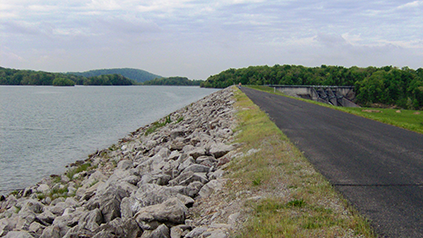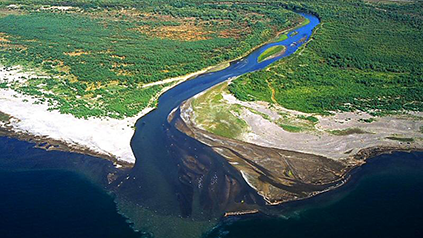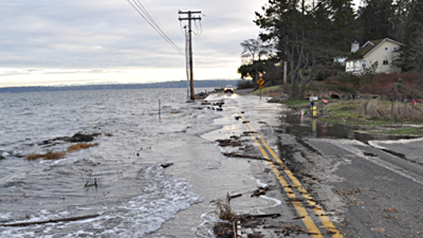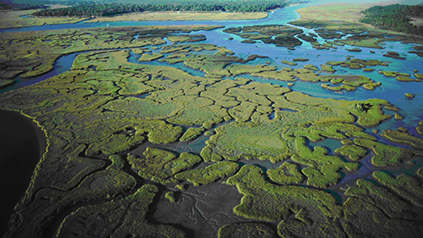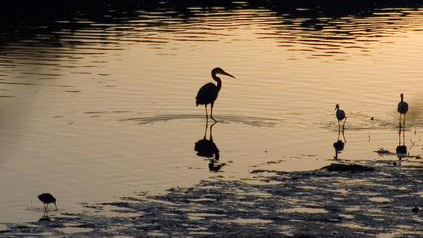Tide Gates 101
Want to learn about tide gates? This is the place to start!
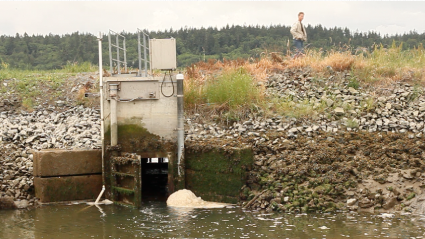
What is a tide gate?
A tide gate is a device that allows water to flow downstream, but prevents water from flowing in the opposite direction.
What is a culvert?
A culvert is a drain or pipe that allows water to flow under a road, railroad, trail, or similar obstruction, typically surrounded by soil.
What is a dike?
A dike, also known as a ‘levee,’ is an elongated naturally occurring ridge or artificially constructed fill or wall, which regulates water levels.
Where and when are tide gates important?
Tide gates are useful in flood-prone low-lying areas near farming drainage, or where a river or stream meets the sea. They are important when these areas are in danger of floods that could potentially cause tens of millions of dollars of damage to infrastructure and private property.
What causes these areas to flood?
Many factors contribute to flooding in these areas, such as:
- Extreme high tides – Tidal heights vary day by day.
- High river flow – High river flow, combined with a high tide means a lot of water with nowhere to go but into the areas near the river (this is called a ‘backwater curve’).
- Local runoff – The runoff carried by a small stream flowing into an already-full estuary.
- Other Factors – Low barometric pressure, wind effects, and waves add to the water level on the shoreline of an estuary.
What is an estuary?
Estuaries fill and drain twice daily due to the ocean tides. This tidal flushing fills the estuary, its tributaries, and the adjoining wetlands with clean brackish water (a mix of fresh and saltwater) on the rising tide and drains the water on the falling tide.
Why are estuaries important?
Estuaries are extremely important and productive natural habitats for all kinds of plants and animals, due in large part to their dynamic nature.
The cyclical flow of the tide rising and falling fills estuaries with cool, clean, oxygenated water on the rising ‘flood tide’ and carries away pollutants, warm water, and oxygen deficient water on the falling ‘ebb tide.’
Estuaries are particularly important for the life cycle of salmon. Young salmon smolts use estuaries to acclimate to living in salt water. Juvenile salmon also find abundant food as well as refuge from predators in the tidal wetlands, streams, and sloughs surrounding the estuary.
Size is one of the best defenses against predators, so a young salmon’s ability to bulk-up in the river estuary before heading out to the open ocean is crucial for its survival.

